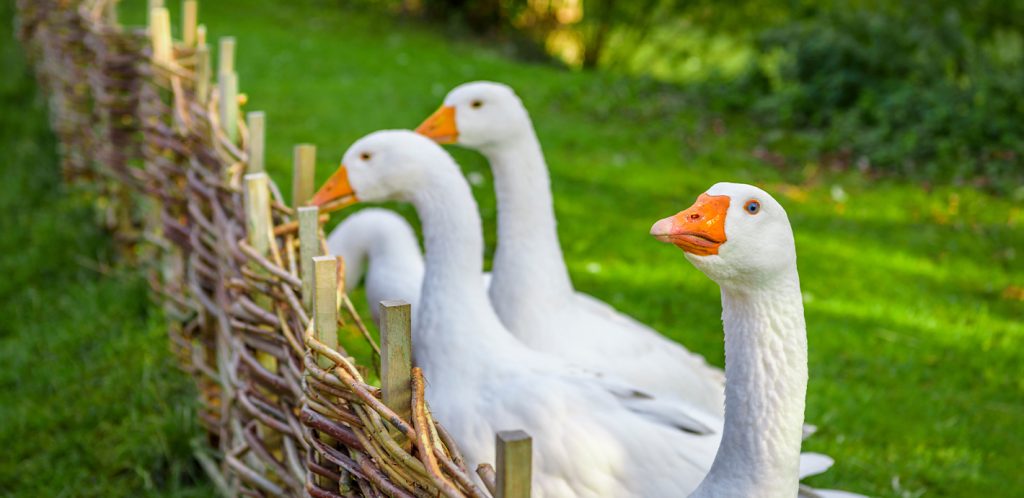
Feather processing in Poland
Feathers and down have been used in Poland for centuries for a variety of purposes – decorative, writing, for military plumes and many others. The cold climate fostered the use of feathers in comforters and pillows. As early as in the 17th century, Jan Chryzostom Pasek described in his chronicles that comforters at the royal court in Warsaw were filled with feathers. Sources from the eighteenth to nineteenth centuries mention the collection of valuable feathers for bedding in the Polish countryside, the first primitive feather-cleaning devices and craftsmen specializing in featherbed making.
There is an old important tradition associated with the Polish countryside, which is called “tearing of feathers”. It literally involves separating a soft and light vane from a hard shaft of feather, so that the latter would not poke through the shell of the featherbed or pillow. Since this activity was laborious and time-consuming, the women living in a village would meet in one of the houses on winter evenings and together they would tear feathers telling each other stories and tales. Once the work was done, they would continue the same work at one of their neighbors’ house. Nota bene, traces of this tradition can be found even today, by the occasion of recycling old used feather material.
Feather processing in Poland developed later than in Western Europe. During the interwar period, feathers were processed and cleaned using primitive manual methods. Significant amounts of feathers were exported to the West as unprocessed raw material. Only after World War II did people begin to invest in the mechanization of feather factories by equipping them with sorting machines, washing lines, tuggers and other equipment.
During the communist period sources of feather raw material were highly fragmented and consisted of numerous small and medium-sized poultry slaughterhouses and countless small-scale farms. The latter collected feathers both from moult-harvesting and from plucking birds pos-mortem. Small traders nick-named “feathermen” used to collect the feathers from farmers and villagers and then delivered the material to wholesalers and feather processors.


The last 3 decades after the fall of communism have been a period of dynamic changes in the feather industry in Poland. Many feather processing machines, such as sorting machines, complete washing lines, mixing units, dedusters, and others, both second-hand and brand new constructions, have been put into operation. Plants have been modernized, production efficiency has been increased, and the in-house quality control laboratories have been developed and well trained in feather and down quality testing. A significant amount of Polish feather raw material is now processed in Poland to be offered as ready-to-fill blends of fully washed down and feathers, reaching as high as 1000 mm turbidity.
Two types of feather materials dominate Polish market: 1) from the White Koluda® goose and 2) from the Polish white pekin duck. Feathers of landfowl are no longer in use. Annual production volume of Polish white goose plumage remains relatively stable, disturbed only by occasional attacks of avian influenza. In contrast, the amount of raw plumage collected annually from Polish pekin duck has increased more than 10 times in the last 15 years.
Polish manufacturers offer excellent white goose feathers and down obtained from birds raised in pure, non-industrialized regions of Poland, such as Wielkopolska, Kujawy, Pomerania, Masuria, Podlasie. Thanks to excellent vertical integration of reproduction, hatching, contract breeding and slaughtering of waterfowl, as well as compact distribution chain and local processing of original Polish feathers and down, Poland offers full traceability of origin of the material and guarantees compliance with international standards for animal welfare.
Some of Polish feather processors as well as independent sewing factories are successively expanding their production of high-quality textile products. The last decade in particular has seen a renaissance, so to speak, of Polish textile production, including the manufacture of quilts, pillows, jackets, coats, sleeping bags and sports outfits. These products are not only being exported, but are also becoming more and more popular in the domestic market. As the Polish society’s prosperity increases, so does the group of consumers who value comfortable and durable down products, especially those filled with Polish white down and feathers.
Polish feather and down processors and bedding manufacturers associated in our Federation are responsible and reliable business partners. Members of the association have great experience, production and commercial competence, and in-depth knowledge of the market with its limitations and opportunities. You are very welcomed to develop new long-term partnerships with our Polish feather industry members.


Do you need additional information?